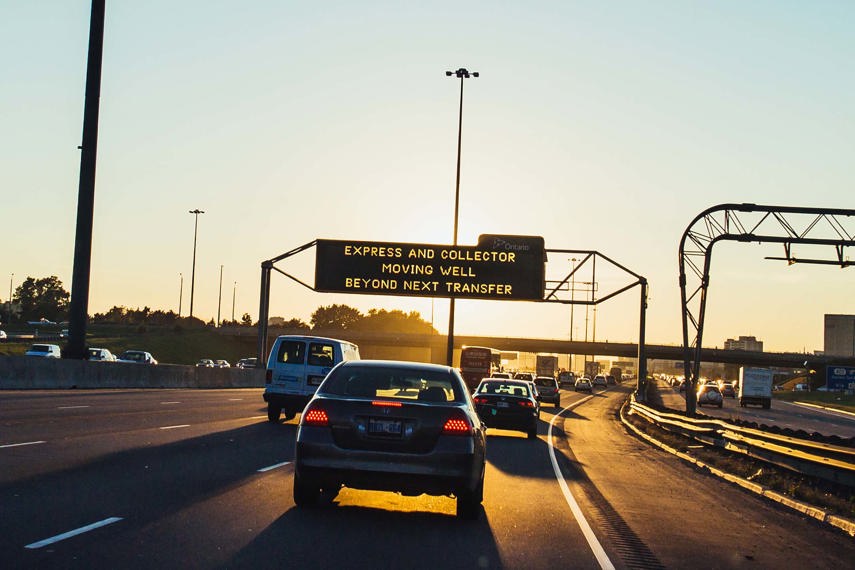Driving is a privilege, not a right.
Sure, every one of us is entitled to a licence once we reach the prescribed age in our home province or territory, but there’s a great deal of responsibility that comes with it. For starters, we all agree to abide by a set of rules that dictate what should and shouldn’t be done behind the wheel.
Beyond those, there’s unwritten reciprocity that governs our roads, and it goes a little something like this: I’ll do my best to keep myself and others safe, and you’ll do the same. After all, safety is an obligation we all share.
It seems simple enough, right? Yet all too often, we lose sight of the overarching rules of the road – both written and otherwise – intended to keep us all free from undue risk. This isn’t about speeding or reckless driving, either, although it’s important to play by those rules, too. No, this is even more basic. So without further ado, here are five simple driving tips you should already be using (but probably aren’t).
1. Turn Your Lights On

We’ve all seen it before: a dark evening drive, with dense fog putting already poor visibility at a premium. Yet just up ahead is some car, truck, or SUV cruising around without its lights on, the driver oblivious to the danger they’re putting themselves and others in. Transport Canada calls these “phantom vehicles,” and they’re an ongoing problem that the government is doing its best to put an end to through legislation that came into effect last fall. Of course, that only applies to new vehicles, leaving millions of others with the inherent flaw.
Automakers are partly to blame for the problem, with most modern vehicles featuring fully lit instruments even when the exterior lights are off, but that doesn’t shift the blame from the shoulders of the people who are actually doing the driving. So unless you’re driving a brand-new vehicle – and even if you are – a quick check that your exterior lights are on should be as routine as buckling your seatbelt. See and be seen, folks.
2. Use Your Signals

If there’s a bigger scourge on driving society than so-called phantom vehicles it’s those making moves on the road – turning, merging, or changing lanes – without signalling. And unlike those exterior lights that may or may not have an automatic setting, the sole responsibility here falls to the person behind the wheel.
Plenty of insightful stuff is taught in driving school, but mind-reading isn’t part of any curriculum out there. So do us all a favour and give that signal stalk a quick tap before you make that next turn or lane change. And while you’re at it, don’t forget that using your signals doesn’t also grant you a licence to change lanes at will. Important though it may be to let others know what you’ve got planned, they need time to react accordingly.
3. Don’t Tailgate

There are at least a couple cool stickers on the back of my car, but none of them are interesting enough that you need to get close enough to read them at highway speed. That’s the polite way to put it, but the simple way is this: don’t tailgate. It’s dangerous and dumb, and highly illegal.
You might not always appreciate the speed at which the vehicle in front of you is travelling, but riding the driver’s proverbial posterior is the kind of aggressive driving behaviour that can end in an altercation or collision, and it just makes you look like a jerk, so don’t do it.
And just so you don’t think I’m unfairly pointing the finger at the impatient drivers among us, remember: if you’re on the highway, keep right except to pass. It’s not up to you whether 120 km/h is fast enough for the left lane, that’s for the police to decide. So once you’ve made your move, get back to the right – and don’t forget to signal when you do it.
4. Respect the Zipper Merge

Here’s another area of mutual responsibility that seems to be misunderstood by more drivers than would care to admit. Zipper-merging isn’t an act of ignorance perpetrated by your fellow drivers to test your patience – it’s the right way to approach the matter of moving over from a lane that’s ending.
Pretend there’s a lane closure up ahead. While it might seem advantageous to shift over as soon as possible (whilst letting your fellow motorists know via corresponding signal, of course), the best course of action is to wait until the bitter end. By turning the situation into an act of synchronized beauty whereby one vehicle at a time makes its way into the free-flowing lane just as the other ends, we alleviate the pressure of the bottleneck.
5. Don’t Touch Your Phone

Anecdotally, at least, it seems like awareness of the dangers of distracted driving – and the laws against it – has waned in the wake of the global pandemic, with a noticeable uptick in the number of drivers using their phones behind the wheel. Just to make this crystal clear, there isn’t a single jurisdiction in this country where you can use your phone while driving. Of course, some laws are more strict than others, but using a handheld device while driving is as illegal in Inuvik, N.W.T., as it is in Elliston, Nfld. That includes when stopped at traffic lights, too.
It’s not just the fines and demerits you should be scared of, either. It’s called distracted driving for a reason, and it’s incredibly dangerous. In fact, distracted driving was a factor in about a fifth of all fatal collisions in the country in 2016, according to Transport Canada’s National Collision Database. That means of the nearly 1,900 deadly crashes that occurred on our roads, about 380 of them involved some form of distracted driving. That’s more than the estimated number of impairment-related fatal collisions each year.
Remember: none of these are arbitrary rules, and there are actual laws on the books that govern each and every one of them. To borrow the words of a friend, everybody’s safety is everyone’s responsibility. And while you’re thinking about safe and responsible driving, check out AutoTrader.ca’s top five ways to pay it forward on the road. Politeness counts, too, people.

